#Eutrochium fistulosum
Photo



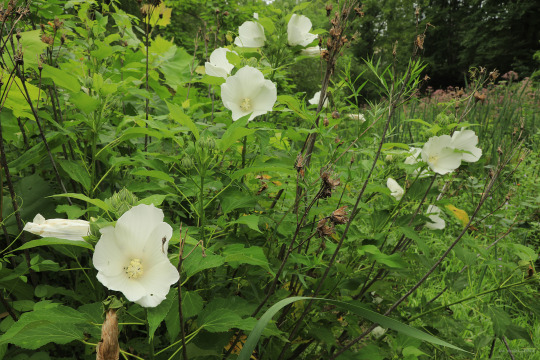





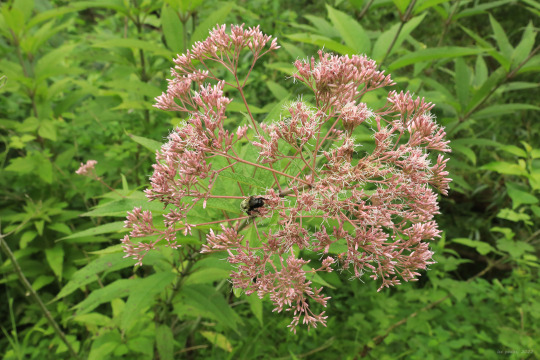
I stopped by the reservoir at White Park yesterday to photograph the rose mallow (Hibiscus moscheutos), sometimes referred to as swamp rose-mallow, which is now at peak bloom. This is a healthy and vigorous wetlands community visited by great blue and little green herons, kingfishers, a variety of ducks, and the occasional osprey - all the more remarkable because it’s within walking distance of downtown Morgantown. Anyway, the rose mallow was fabulously beautiful in its various shades of crimson red, pink, and white, and the hollow Joe Pye weed (Eutrochium fistulosum) was equally impressive, presiding over its wetlands kingdom with the massive lavender crowns of true kings.
From top: rose mallow, whose flowers display high variability in color and petal sizes/orientations (although some specimens may be hybrid escapees, this plant nonetheless possesses some wild genetic impulses); wild mint (Mentha arvensis), a cosmopolitan mint with a strong flavor and an affinity for wetlands; Allegheny monkeyflower (Mimulus ringens), a whimsical perennial that forms dense stands in swamps and along streambanks; seedbox (Ludwigia alternifolia), so named because of the four-sided shape of its seed capsules; and without further adieu, a true king bowed under the weight of its elegant crown.
#appalachia#vandalia#west virginia#summer#flora#wildflowers#wetlands#white park#morgantown#hibiscus moscheutos#rose mallow#swamp rose-mallow#mentha arvensis#wild mint#mimulus ringens#allegheny monkeyflower#ludwigia alternifolia#seedbox#rattlebox#eutrochium fistulosum#hollow joe pye weed
80 notes
·
View notes
Text


8/16/22
I found a small clearing full of joe-pye weed over 10 feet tall. I stood on the outside of the grouping and saw hundreds of pollinators, from tiny parasitoid wasps to huge tiger swallowtails, dancing atop the powder pink blooms.
1 note
·
View note
Text

Hollow Joe Pye weed (Eutrochium fistulosum). Also called trumpetweed or queen of the meadow. Butterflies love it.
4 notes
·
View notes
Text
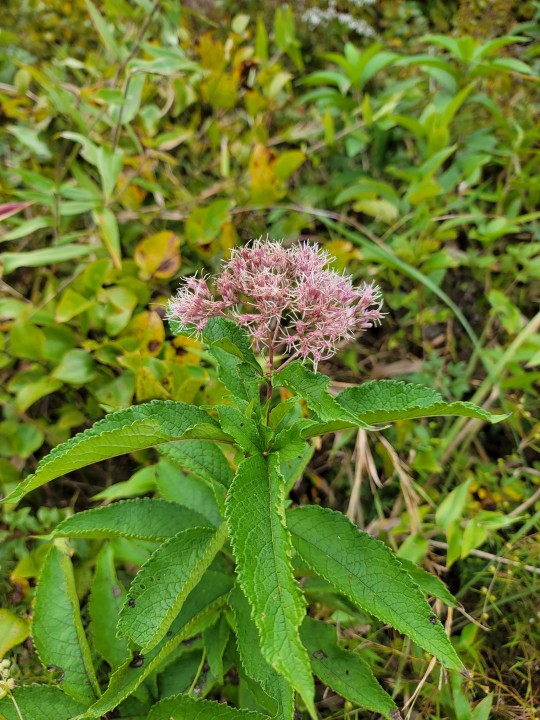

Native plants of the day: Eutrochium fistulosum or Hollow Joe Pye Weed
This species of Eutrochium (previously classified as Eupatorium) is a perennial herb closely related to Purple Joe Pye Weed. This plant is common in wet-moist locations throughout the eastern US including wide variety of stressed environments (like the serpentine barrens I found this in). The Hollow Joe Pye Weed can get up to 5-7ft easily with lovely pink/purple flowers. In late summer it's not uncommon to see this plant swarmed with pollinators and hummingbirds. This plant produces thousands of wind propelled seeds of which only a few are actually viable, making our Joe pye weed less weedy than the name implies.
4 notes
·
View notes
Text

The colors in my garden bring me joy.
Some floppy hollow joe-pye (Eutrochium fistulosum), scaly blazing star (Liatris squarrosa), mistflower (Conoclinium coelestinum), and gray goldenrod (Solidago nemoralis).
Virginia, USA
1 note
·
View note
Text
I've been growing a lot of plants for work and my own little nursery business! I grow a lot of Kentucky native species and some houseplants and terrarium plants. These are photos of a lot of the native stuff I'm growing from mostly locally collected seeds and some from Roundstone, a vendor who generally sources from our region.
Species pictured here are Dalea purpurea, Oenothera macrocarpa (native-adjacent), a species of Chelone (either glabra or obliqua), Eutrochium fistulosum, Helianthus mollis, and a photo of some Paxistima canbyi (S1G2) from the Atlanta Botanical Garden in a greenhouse at work that we're caring for until they can get planted out at a site in central KY!
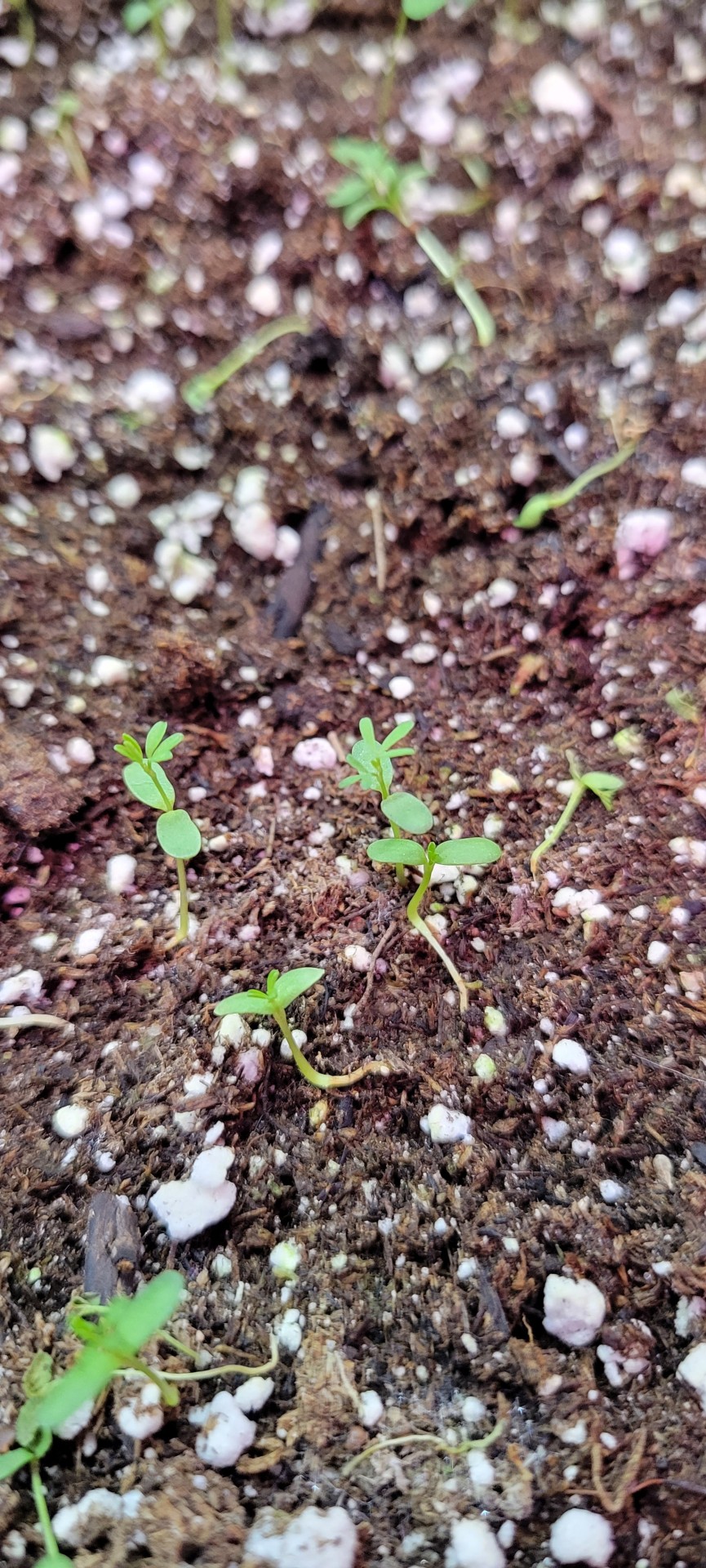


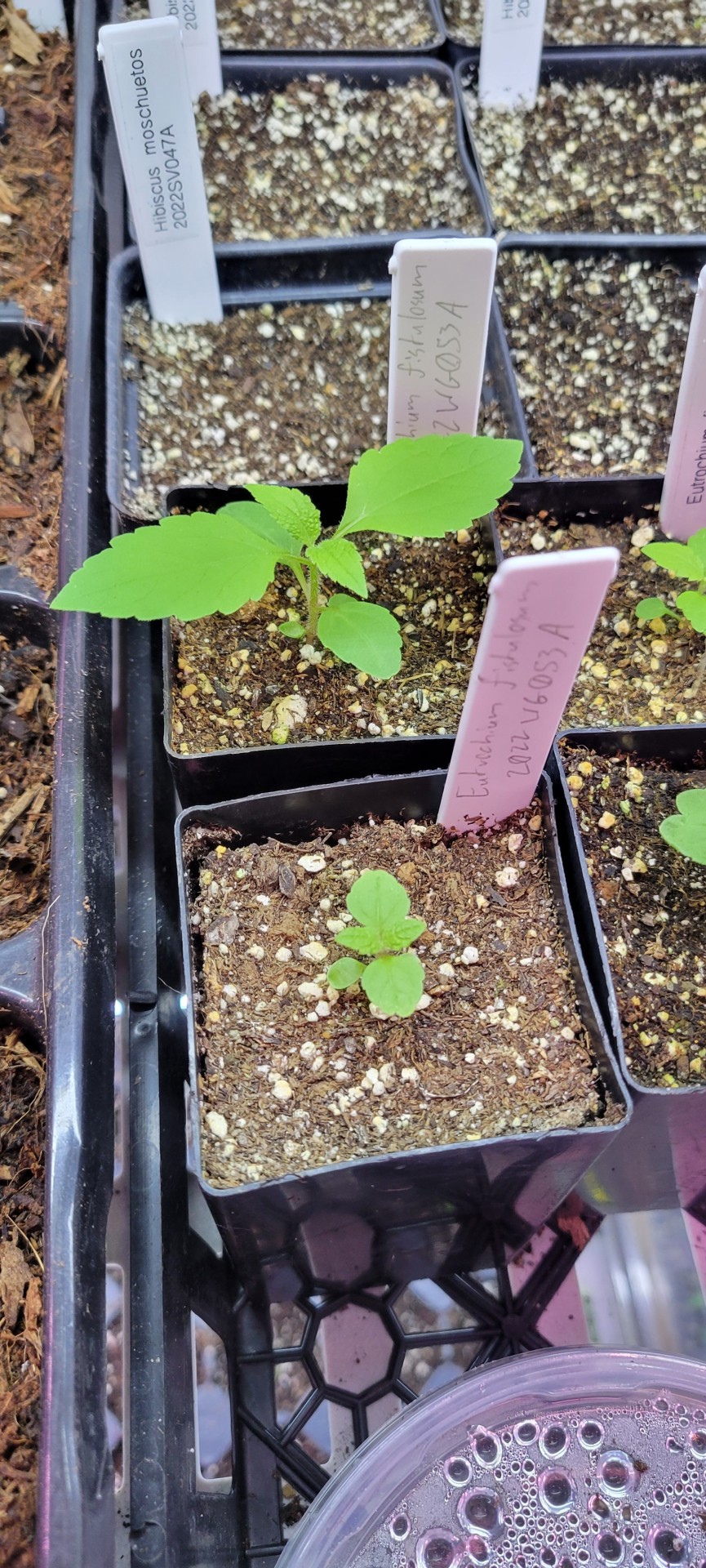
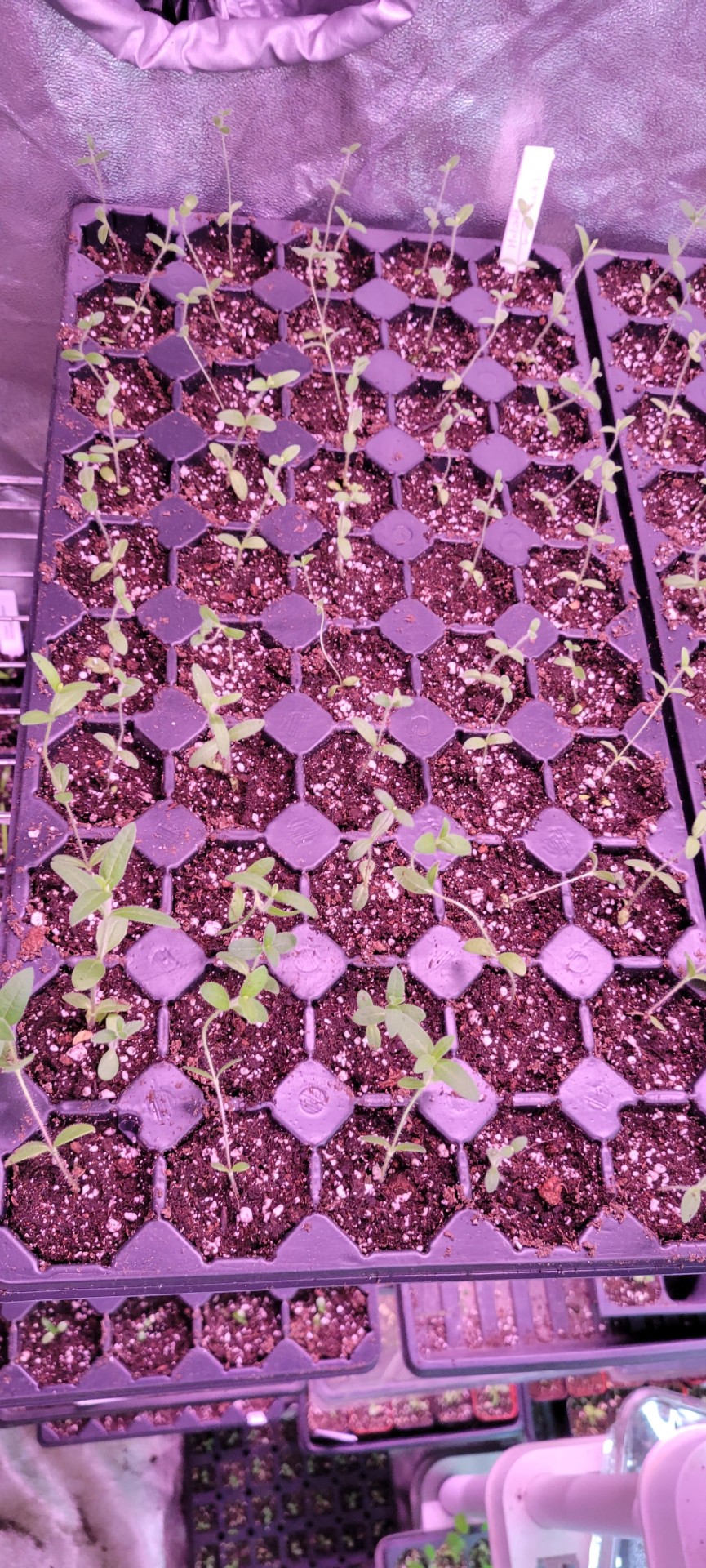
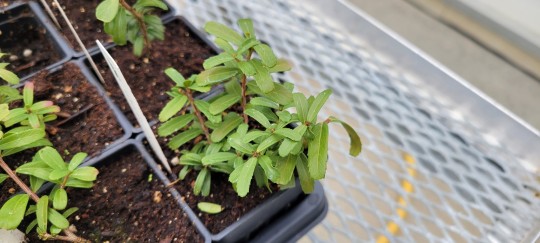
#botany#floral#foraging#kentucky#kentucky plants#plantblr#conservation#plant conservation#arboretum#plantcore#botanic garden#botanical
0 notes
Photo
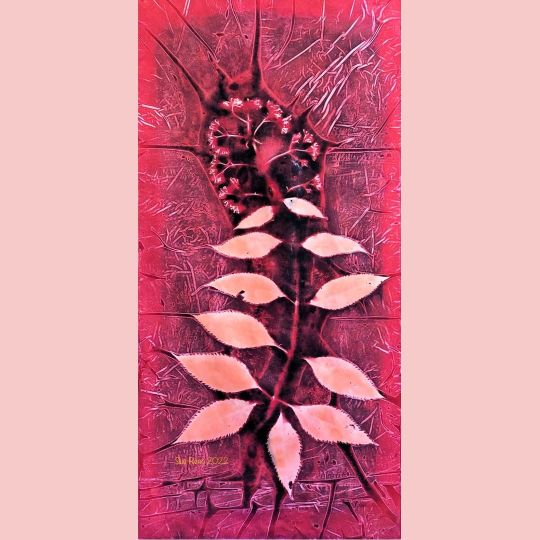
More autumnal printmaking goodness as I work on wrapping up the year in printmaking. This batches features that large and luscious native wildflower, Joe Pye weed, Eutrochium fistulosum. I was never able to grow it to its full potential before moving to this property 3 years ago and finally situating it to its liking. It gets very tall, and the flower heads in late summer attract all sorts of large and small pollinators and assorted insects. This batch features prints with both Solarfast solutions and cyanotype chemicals. More images and details on my blog, link in profile. I'm writing this in the midst of a polar vortex, with the temperature at 1F, and a wind chill of minus 20F something. It's a good day to remind myself that the garden will grow lush again in a while. #wetcyan #wetcyanotype #cyanotype #blueprint #altphotography #printmaking #botanicalprintmaking #fiberart #textiles #artquilt https://www.instagram.com/p/Cmhk9QGPOXE/?igshid=NGJjMDIxMWI=
#wetcyan#wetcyanotype#cyanotype#blueprint#altphotography#printmaking#botanicalprintmaking#fiberart#textiles#artquilt
0 notes
Photo
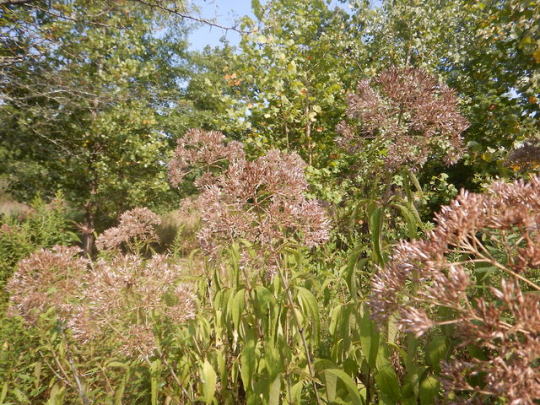
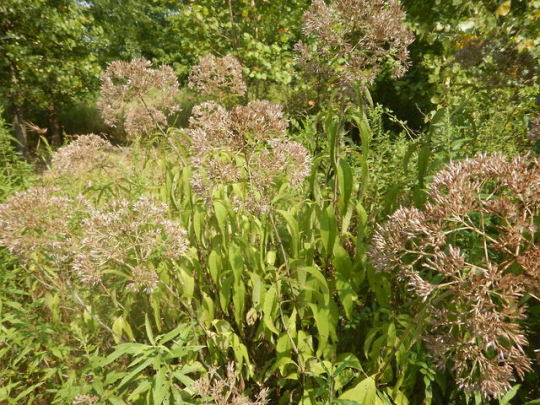

Eutrochium fistulosum
after a few weeks of solid 95+ degree highs and no rain the giant Joe Pye is looking sad to say the least.
Photographed at the Adena Mound Prairie
31 notes
·
View notes
Photo
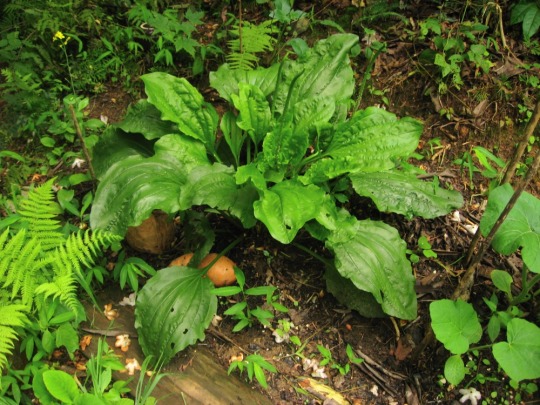


This is a bed we added to the hillside above the cabin. The hillside only had ferns and club moss at one point, then it started developing saplings from the tree seeds and hollowstem Joe Pye weed (Eutrochium fistulosum). We chop that every other year or so to add material to the soil, but this bed was created by dumping a large amount of charred and rotten wood and then a thick layer of partially composted food scraps and paper waste mixed together. We covered that with a thin layer of leaf mould and loam to keep animals from trying to dig up any larger scraps. Butternut squash seeds got mixed in from being swept off the floor and grew everything we harvested last year in just two months, so we planted more this year on purpose (after adding a new layer of partially finished compost). The plantain (Plantago major) in the first photo is huge, it’s easily two feet across. It’s also the most bitter plant, even from the newly sprouted leaves.
16 notes
·
View notes
Text
the audubon society plants list finally loaded kids let’s do a brief (haha) cold medicine induced analysis of what the heck they’re recommending for my local area (western PA) and whether it could grow in my shitty yard (if i’m unfamiliar with it i’m skipping it just to be fair)
It’s alphabetical by common name I guess so ok i’m doing this under a cut I supppose
Allegheny Monkey Flower (Mimulus ringens) - this plant is indeed one you see kinda often...... on the very edge of the Allegheny river literally growing as a marginal plant. not ideal unless you got a pond or live in a swamp
Allegheny Serviceberry (Amelanchier laevis) - this is one you see growing in the woods near swamps so nope, not in this drought hellscape of a yard
Alternate-Leaf Dogwood (Cornus alternifolia) - another understory moisture loving tree/shrub... next
American Beech (Fagus grandifolia) - again, moisture loving woodland tree. European Beeches are overall more drought tolerant so if you see a beech in the city or suburbs, it’s probably not an American Beech. also, in my area, you can’t find an American Beech that isn’t suffering from Beech bark disease unfortunately
American Black Elderberry (Sambucus nigra ssp. canadensis) - These are good plants and grow all along the shady woodsides here. Same issue though, they like moisture and at least partial shade. And the ornamental varieties you can find at garden centers tend to be European hybrids with fancy leaves
American Pokeweed (Phytolacca americana) - shadey woodland lad again. They’re also very very weedy idk that anyone would want this in their garden.
American Witch-Hazel (Hamamelis virginiana) - a good plant. still needs moist soil but I think would probably be ok. It looks really cool planted near grasses because it blooms in fallish
Big Bluestem (Andropogon gerardi) - finally a prairie plant!! it’s my boy big bluestem. unfortunately, it can look kinda wild and weedy for a suburban garden unless you do it right.
Black Chokeberry (Aronia melanocarpa) - handsome, good, nice berries, good fall foliage, excellent choice, prefers full sun but still likes it a bit moist and will drop all its bottom leaves and turn fall colors early if you underwater it oops i definitely never was responsible for that at work with b&b aronias.
Black Raspberry (Rubus occidentalis) - oh word we got these in our garden and the birds actually like the red ones better rip
Black-Eyed-Susan (Rudbeckia hirta) - that’s right babey it’s Susan. this baby will reseed all day in sun or shade and birds love that shit. downfall is the species plant is prone to rust and cultivars do a bit better.
Butterfly Milkweed (Asclepias tuberosa) - Good and Wholesome friend. I don’t recommend this as baby’s first milkweed though because they can be slow to establish and kinda disappointing and small and if you get caterpillars on it the first year, it may not survive.
Cardinal-Flower (Lobelia cardinalis) - my mom actually has managed to keep a Lobelia alive in the shadiest, wettest part of her garden but listen...... this is a marginal or swamp plant. Put it in the swamp.
Common Buttonbush (Cephalanthus occidentalis) - it’s the bae
Common Milkweed (Asclepias syriaca) - do not try to buy this as an established plant at a garden center, they will look at you funny and point at the roadsides. Either wait until fall seedpod time and go harvest some or buy some seeds online
Common Snowberry (Symphoricarpos albus) - I had no idea this was native actually but it’s cool because it gets big white ORBS
Common Winterberry (Ilex verticillata) - it’s got stems. it’s got berries. it can grow wherever. what more could you want??? english holly who?????
Common Yarrow (Achillea millefolium) - actually often confusingly hybridized with European Yarrows so no one knows whether they’re ~true~ natives or not. Who cares they will survive anything except a swamp. They will live in a drought ass no topsoil suburban neighborhood like a CHAMP. they were made for this.
Dense Gayfeather (Liatris spicata) - just including this one because it sounds like a Good Omens joke
Flowering Dogwood (Cornus florida) - put that baby tree back in the moist woodlands where it came from or so help me
Gray-Head Mexican-Hat (Ratibida pinnata) - ayyy prairie plant, though this isn’t the species you commonly see for sale at garden centers and this one is decidedly less phallic than R. columnifera so that’s a bummer.
Great Blue Lobelia (Lobelia siphilitica) - we half killed this at work because it doesn’t love pot culture or me but someone still bought it all. don’t put this in your dry ass suburban neighborhood or she will hate you too
Northern Bayberry (Morella pensylvanica) - i call this myrica pensylvanica but whatever. birds love it. so do japanese beetles unfortunately
Pennsylvania Sedge (Carex pensylvanica) - it’s a sedge
Red Columbine (Aquilegia canadensis) - unlike other columbine, this bitch likes full sun and probably will grow and reseed anywhere
Redbud (Cercis canadensis) - another understory-ish moisture loving tree but a lot of the cultivars do just fine in the middle of sad suburban yards. also good. blooms wherever it wants while nakey.
Scarlet Beebalm (Monarda didyma) - you will only ever find cultivars of this but who knows, they may slightly more mildew resistant for at least a little while
Shag-Bark Hickory (Carya ovata) - big, handsome, looks like it’s seconds away from falling apart at all times. just how i like my men.
Smooth Oxeye (Heliopsis helianthoides) - please let the one in my mom’s yard know that it’s meant to survive dry soils in full sun
Spotted Beebalm (Monarda punctata) - my favorite bee balm but doesn’t have the Wow factor of M. didyma cultivars. It likes the sun and dry though
Spotted Touch-Me-Not (Impatiens capensis) - wholesome friend! But no one in their right mind would plant this on purpose in their garden also it would be wilt-city out here in the drought ass topsoil-less surburbs. these babies used to grow between the greenhouses and I used to water them like some kinda of bleeding heart
Swamp Milkweed (Asclepias incarnata) - she can actually live pretty well in the middle of drought ass suburban yard and spreads easily by seed but expect half the lower leaves to yellow and drop off by midsummer. poor darling. put her back in the swamp. This is the most reliable commerically available milkweed you will find because it takes to pot culture way better than other milkweeds (rip all the butterfly weed horticulture land kills yearly)
Sweet-Bay (Magnolia virginiana) - more like sweet bae am I right???? actually she wouldn’t live in my yard. needs some afternoon shade and moist, rich soil.
Sweet-Scented Joe-Pye-Weed (Eutrochium purpureum) - It’s Joe!!!!! Will grow all over. Will get 7 feet tall with massive flowers just because he can. Will grow in a swamp, will grow on a hillside, will grow beside Wal-Mart. Joe don’t care. I still call it Eupatorium because I resist change and actually I’m not 100% sure if this or E. fistulosum that is most common around here.
Tall Tickseed (Coreopsis tripteris) - coreopsis is a really popular genus to see on native plant lists but there aren’t many native to my area of Pennsylvania and you won’t find anything but C. verticillata or C. lanceolata cultivars in garden centers. BUt apparently this bitch can get NINE FEET TALL i’m swooning
Trumpet-Creeper (Campsis radicans) - ok, i’d avoid planting this baby unless you know exactly what you’re doing. she may be native but she can and will do her best to eat your home and foundation and your garden in general. she will do her rhizomey best to runner away from you into the wilderness. fun to grow across a pergola though but she will EAT your TREES and your HOME
Virginia-Creeper (Parthenocissus quinquefolia) - ????? no one is going to deliberately plant this, Audubon Society
Wand Panic Grass (Panicum virgatum) - this is why I think making these lists with common name first is so hilarious because what????? I know this as “Switchgrass” which sounds nice and normal wtf is a Wand Panic Grass. that’s what i’m going to call bad bottom dysphoria episodes from now on
White Turtlehead (Chelone glabra) - likes it wet and shaded so wouldn’t do nice in my yard. also why even BOTHER planting this plant unless you’re going to do the cultivar ‘Hot Lips’ (jk probably the white one is more native insects friendly)
Wild Hydrangea (Hydrangea arborescens) - she’s cute and all but if you want a Hydrangea just go full cliche H. paniculata cultivar or nothing. This plant would hate my whole entire yard and then die
anyway, that’s all the plants on the list I felt like rambling about on this fine Tuesday morning. Overall, idk how helpful a list like this would be for first time gardeners, because they would run into the issue of not being able to actually their hands on most of these plants.
Very few on the list would actually be suitable for growing in a new suburban neighborhood or an urban garden. This is an area naturally full of sensitive, woodland, rich, moist soil-loving plants... and unfortunately, those areas are disappearing more and more under new developments and the native pollinators and wildlife are going along with them.
#i really just did that and rambled about a whole lot of plants for no good reason#long post#idk what to tag this as
19 notes
·
View notes
Text
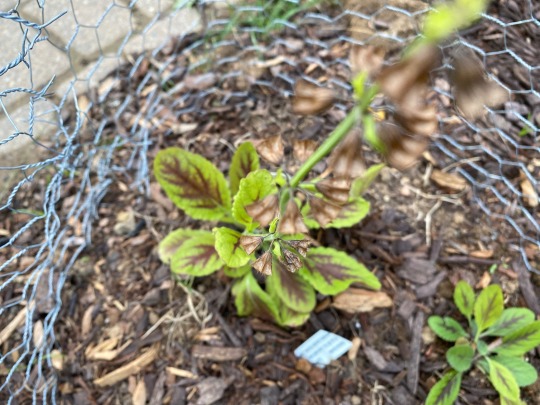

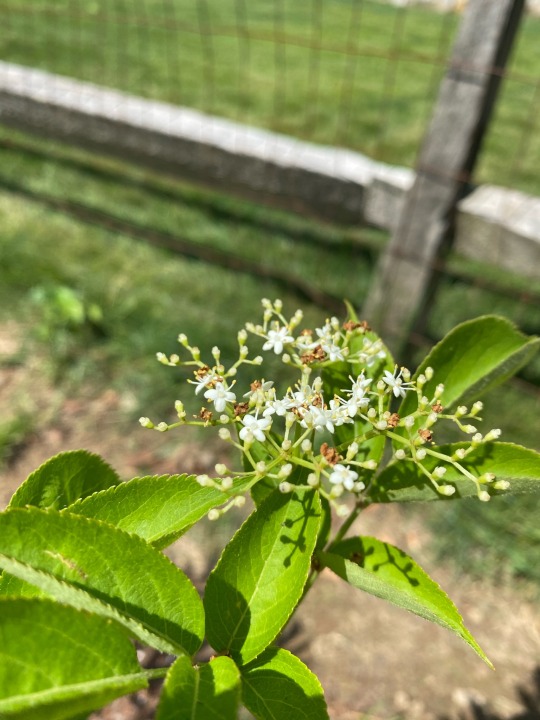
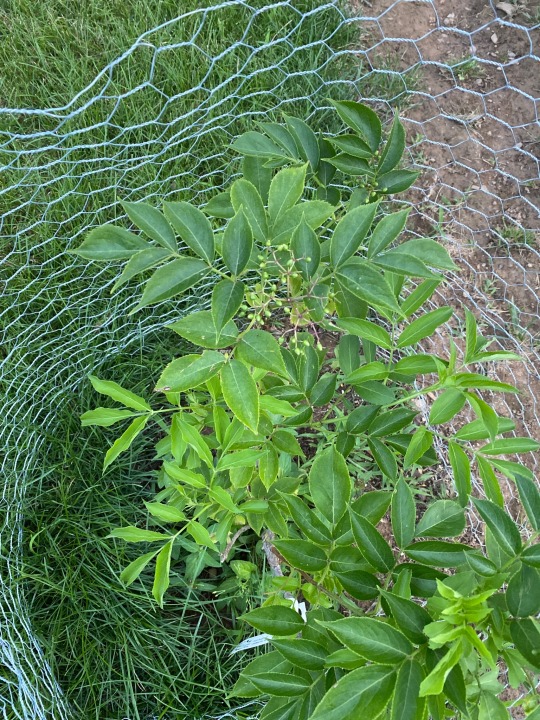
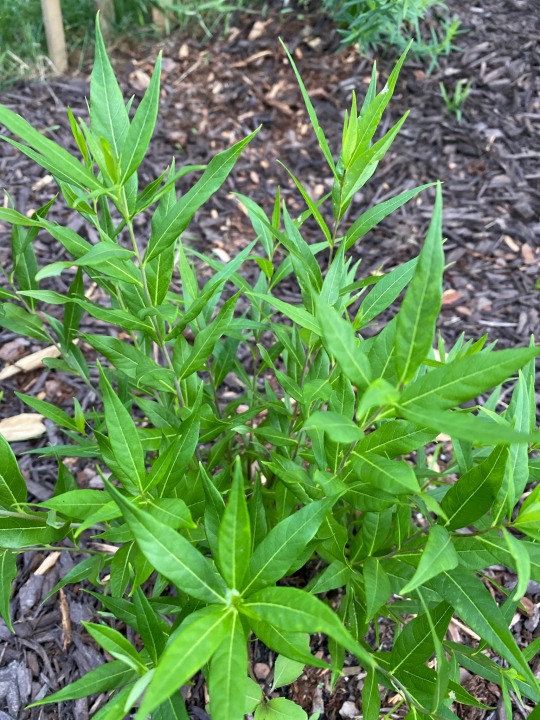

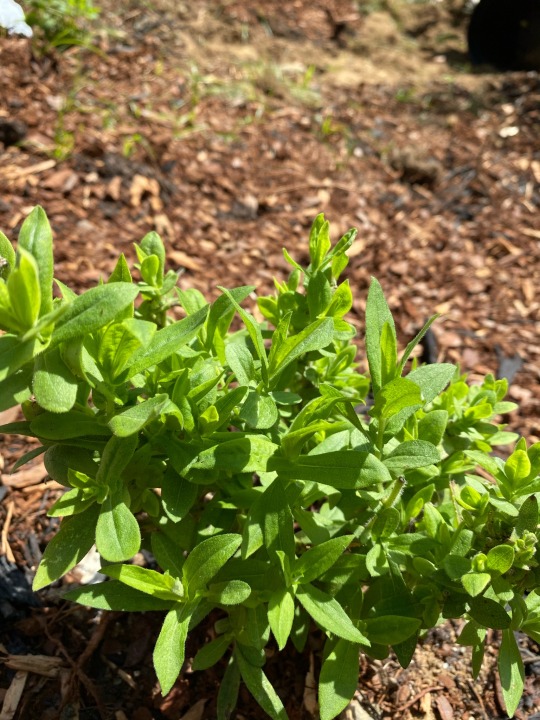
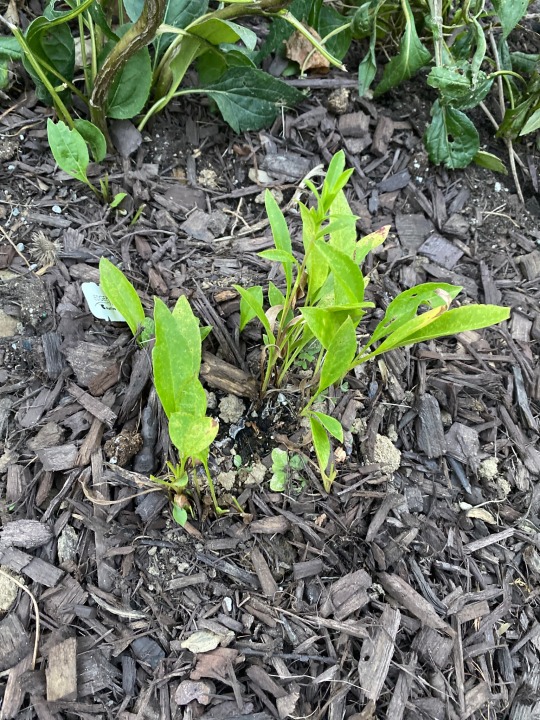


1,2 Salvia Lyrata - lyre leaf sage
3,4 is of Sambucus Nigra - black Elderberry
5,6 Amsonia tabernaemontana + Amsonia tabernaemontana ‘blue ice’ - Bluestar and ‘blue ice’
7 Aster Novae-angliae syn. Symphyotrichum novae- angliae - New England Aster
8 Aster spectabilis syn. Eurybia spectabilis - eastern showy aster
9 Eupatorium fistulosum syn. Eutrochium fistulosa - hollow Joe pyed weed
10 - Aconitum unicatum ‘White Witch’ - white wild monkshood (photo from a few weeks ago it’s doing a lot better now and I actually raised the soil there so it can spread better)
Majority of the plants I have are native that are in the ground as I want to introduce them again to the landscape. I’m excited to explore and learn from the plant elders. Both the Medicinal and more magic teachings of the plant elders. I’ll also post updates. I wish to become more in tune with the land
0 notes
Photo

Lucky Light ~ Queen of the Meadow ~ Joe Pye Weed ~ Trumpetweed ~ Eutrochium fistulosum • momartiphotos©️™️2019 Camp Garvey in Brown County, IN. - August 1, 2019
#lucky#light#joepyeweed#queenofthemeadow#trumpetweed#northmeadow#campgarvey#browncountyindiana#indiana#nature#hikewithquinn#wildflowers#flowers#pink
0 notes
Video
youtube
7 notes
·
View notes
Photo
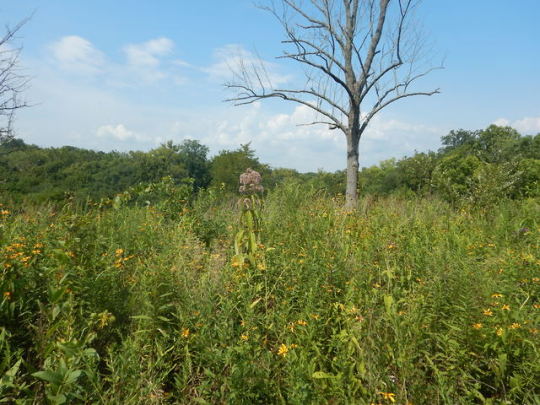
Eutrochium fistulosum
Great Joe Pye
sitting idle at the top of the Adena Mound Prairie
#Eutrochium fistulosum#eupatorium#eupatorium fistulosum#eutrochium#botany#plantblr#ohio#nature#natureblr#naturecore
5 notes
·
View notes
Photo
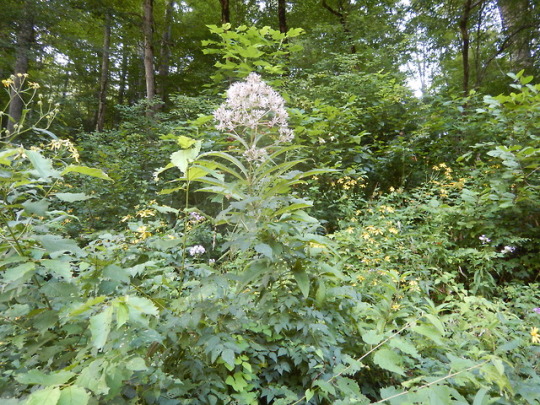
Hollow Joe Pye, along the riverside, tangled up in ground nut and dodder.
Eutrochium fistulosum
Photographed at Red River Gorge, Near “the Jump Rock”, Sheltowee Trace. Slade, Kentucky.
20 notes
·
View notes
Photo
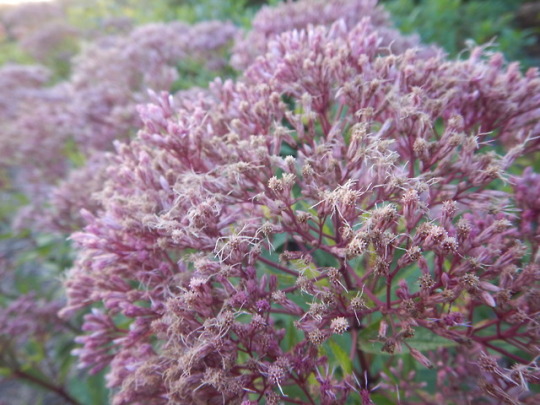

Hollow Joe Pye Weed
Eutrochium fistulosum
There is something to be said about the beauty of the tall hollow Joe Pye and the color that pops out this time of year as Autumn begins at Red River Gorge.
3 notes
·
View notes